If you’re reading this, then some major respect is due. Not just for the legendary musicians we’re going to be talking about today, but actually for you!
You’ve come this far searching for answers, which means that your passion for music goes beyond listening to some catchy melodies and pretty vocals. Not many people take the time to actually learn about music, so kudos!
By now, I’m guessing it’s pretty clear to you that music theory is a world full of vague terms. Some of these terms can seem complicated or confusing to explore, while others may be downright scary!
This is why I’ve taken it upon myself to try and make music more approachable and easier to understand for anyone willing to join the club. Today, I’m answering the question: what is classical music?
The term “classical music” is one of those things that you think you’ll just know when you hear it, but in reality, it can be quite elusive to follow and a lot of people often get it wrong.
Does classical music mean old music? Or serious music? Perhaps it’s both?
Well, I can tell you this: it’s not that simple. In this article, I’ll be explaining what classical music is, what characterizes it, how many forms it includes, what are its periods, and who are the most famous musicians of each era. Let’s get started!
What is Classical Music?
The term “classical music” is commonly used when referring to formal Western music, setting it apart from Western popular or folk music. Classical music may also refer to non-Western music that exhibits similar characteristic formality.
Classical music is classified into 7 periods: Early Music, Renaissance, Baroque, Classical, Romantic, 20th Century, and Modern/Contemporary.
What are the Characteristics of Classical Music?
Since European music encompasses a wide range of styles, it can be hard to attribute a list of characteristics to all the works of a certain type. However, classical music does have a couple of universal characteristics we can discuss.
First of all, just about every classical music work written since the late 1200s and up until about 1600 involved the use of a standardized, precise system called mensural notation in their compositions and performances. After 1600, this system shifted into modern bar notation.
Another major characteristic of classical music is the creation of highly complex works for solo instruments (for example, the fugue). With some research, you’ll find that the first symphonies produced came about during the Classical era (more on this later).
Since then, the ensemble of symphonies and the featured compositions became a staple characteristic of the grand classical music period.
Complexity
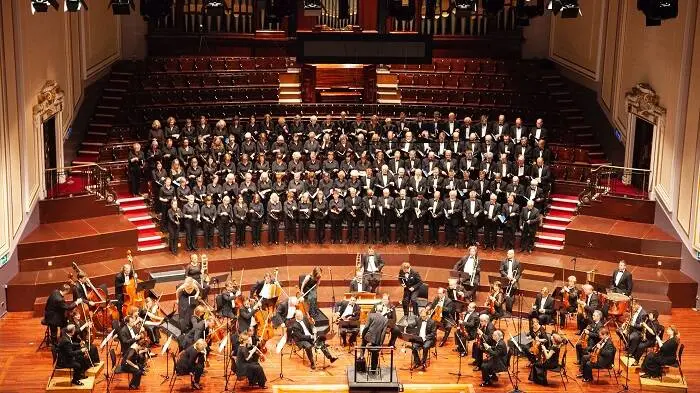
As I mentioned above, works of classical music are known to exhibit a high level of complexity, owing to the use of orchestration, phrasing, harmony, counterpoint, development, texture, rhythm, and form.
Most popular music styles typically adopted song forms, but classical music mainly revolves around the use of sophisticated instrumental forms such as the symphony, concerto, and sonata.
Additionally, classical music features complex combinations of vocal and instrumental forms. We can see this in opera works (more about this later) where singers -soloists and choirs- enact dramatic plots accompanied by music from a full-blown orchestra.
Instrumentation and vocals
Most of the instruments that are commonly featured in works of classical music were invented way before the mid-1800s and systemized during the 1700s and 1800s. Examples of these instruments include the ones featured in orchestras (or concert bands) as well as multiple solo instruments such as the organ, piano, and harpsichord.
Both the symphony orchestra (more on this below) and the concert band include players of the brass, string, woodwind, and percussion instrument families. The latter usually features more numbers and a greater variety of brass and woodwind instruments compared to the former.
However, the orchestra has a string section whereas the concert band doesn’t (often include a double bass).
As for the vocal practices of classical music, they developed throughout the different periods from single-line monk chants (monophonic) during the medieval era to complex chorals (polyphonic) emerging in the Renaissance and following eras. The latter involved several separate vocal melodies performed simultaneously.
Common Forms of Classical Music
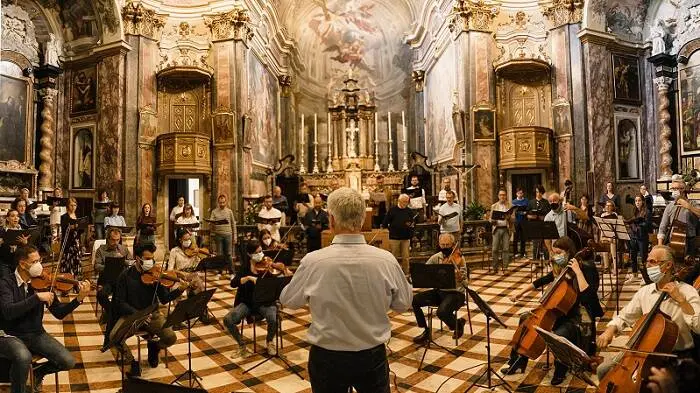
Contrary to what you may think, classical music is a rich branch of music. It includes a variety of forms -which means a type of musical work- that you can see during a concert program. Below are the 10 most common ones:
1. Aria
Did you ever listen to a certain part in the opera and think “wow, that singer is showing off!”? Well, chances are they actually were!
In an opera, there’s a precise moment when one of the lead characters gets to show off their vocal range to the audience. It’s called “Aria”.
While the aria may have some sort of a dramatic purpose in the story, it’s mainly an opportunity for the singer to rile up the crowd and get as much applause as possible.
Just think about any “hit” opera you’re familiar with, it’s very likely that it’s an “aria” extracted from a “full” opera and re-introduced in the form of a symphony concert where multiple singers participate to perform a different aria from a bunch of operas.
Such concerts usually feature lots of thrilling high notes that get the audience on their feet afterward.
2. Opera
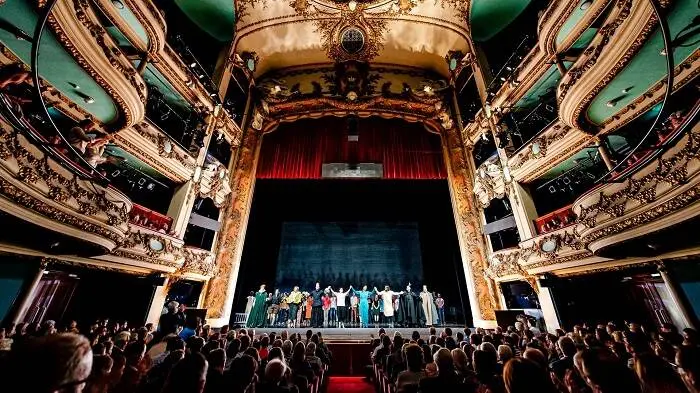
The opera form includes singers who use their vocal capabilities to perform dramatic plots via huge melodies (these are the arias we explained above) or half-sung half-spoken dialogue moments called recitative.
An opera features sets, costumes, staging, as well as a full-blown orchestra. There’s a wide range of opera types, ranging from light-hearted comical short ones to incredibly epic ones that last for hours.
3. Concerto
The “concerto” is a form of classical music that puts a soloist (typically a cellist, violinist, or pianist) against all the rest of the orchestra. The purpose here is to highlight the skills of both the soloist and orchestra, independently and as a unit.
It’s very rare for a symphony concert not to include a concerto. It’s common knowledge that symphony presenters go above and beyond to feature the most proficient soloists for fall’s opening night concerts.
4. Cadenza
During a concerto, the soloist gets an opportunity to show off their skills alone. This section is called the cadenza. It takes place at the wrap-up of one or multiple movements, where the orchestra suspends playing and the stage is figuratively cleared for the soloist to go all out, creating a distinctly dramatic moment.
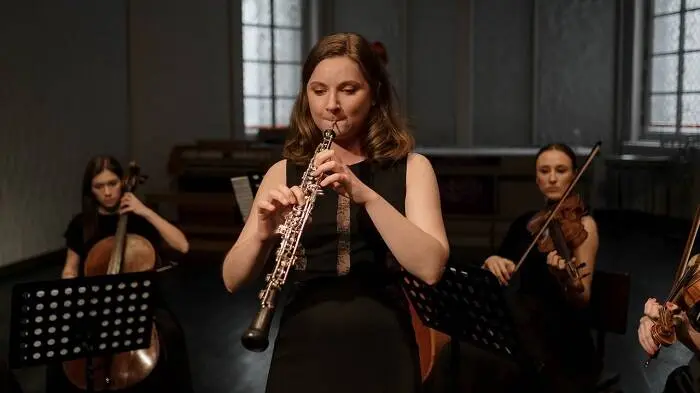
After a while, the orchestra joins the soloist once again to finish playing the current movement. This happens upon a certain musical cue or even eye contact between the conductor and the musicians.
Oftentimes, composers pre-write cadenzas. However, in the era of Mozart or Beethoven, soloists used to compose their own pieces.
5. Chamber music
Next up, we have chamber music. This is when a few instrumentalists (usually 3 or 4 but can be as many as 8) are grouped with a single performer to a part.
Chamber music doesn’t include a conductor because the musicians work out the flow on their own. If the group features a pianist, there’s often a page-turner as well.
Festivals playing chamber music often occur in the summertime. They’re super fun for both the visitors and performers thanks to the relaxed atmosphere and cozy venues. It’s to the point that renowned soloists often end up playing together in laidback sessions.
6. Movement
The majority of classical music works are divided into “movements”. You can think of movements in a piece of music like a book’s chapters, with a conventional pace of fast/slow/fast as in a symphony or a sonata.
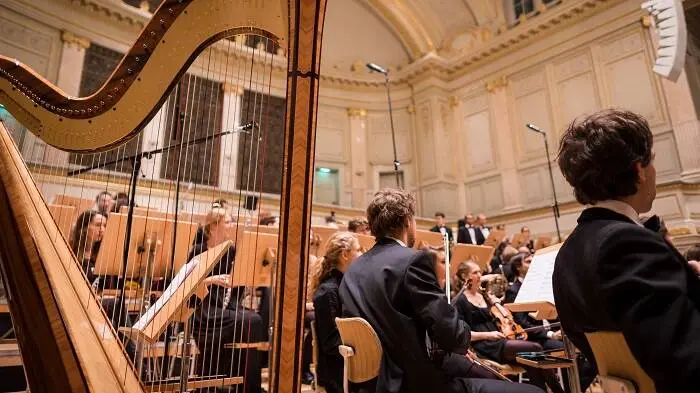
After the end of each movement, there’s a short break which serves as a chance for musicians to adjust the tunes of their instruments, as well as for the audience to get all the throat-clearing and coughing out of the way.
A lot of newbie audience members get nervous at that moment because they assume it’s a pause for clapping when it’s nothing but. The best thing to do during that time is to enjoy the silence and embrace your senses for the next movement.
7. Sonata
When a piece of music is composed for a solo instrument, it’s called a sonata. Usually, this instrument is a piano, and if the sonata isn’t meant for a piano alone, then the instrument it’s written for is often accompanied by the piano.
Typically, a sonata consists of 3 or 4 movements, with so many notes to memorize.
8. Opus (Op.)
Opus is a system that catalogs works of composers, especially those who are -or were- highly productive. It’s basically a number that’s assigned to a composer’s classical work (or set of works) to put their musical output into proper chronological order.
9. Overture
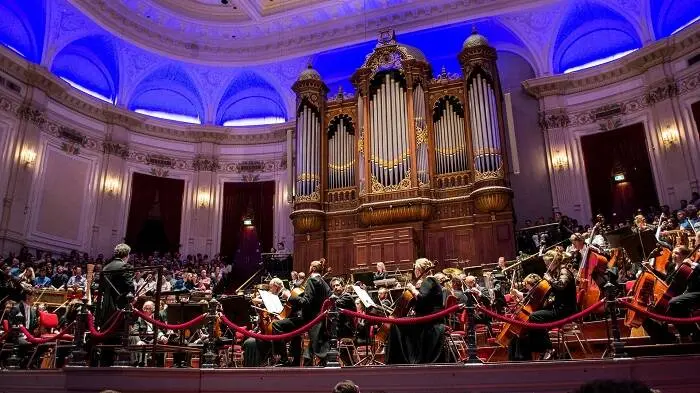
Way back in the day, around the 1600s, the overture was commonly found in lobbies where it served as a gong that produced a sound to signal people to go to their seats. After a while, the overture became sort of an introduction to musical events — just a short bit before the main section starts.
In opera, composers usually postponed writing the overture till after everything else was written. This way, the overture would give the audience a taste of most of the themes included in the opera.
In the 1800s, the overture evolved and was written as a separate piece on its own that could be later incorporated into any concert.
10. Symphony/Orchestra/Philharmonic
Explaining this form of classical music can get tricky, but to put it simply, a symphony refers to a group of multiple players including brass, string, percussion, and wind. When a piece of music is written to be played by such an ensemble, it’s called a symphony.
The term “symphony orchestra” is mostly used to describe an even larger group of players. There’s also something called a “back-up orchestra” that usually accompanies jazz singers and is typically a lot smaller than classical orchestras.
The term “philharmonic” is frequently used when multiple large groups are present in the same city to help people tell them apart. As for the term “orchestra”, it’s commonly used when talking about the members of the groups themselves.
Different Periods of Classical Music
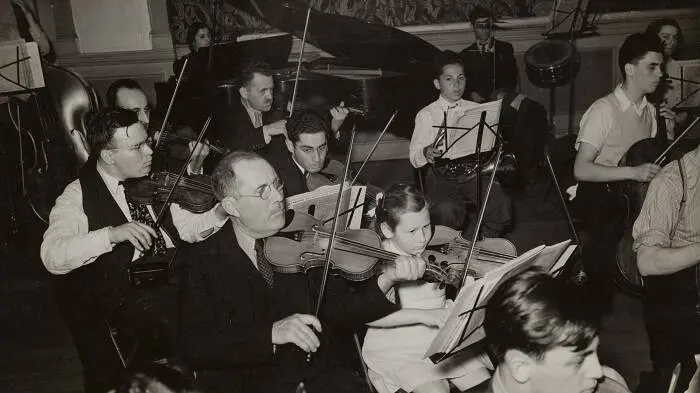
Classical music is commonly categorized into 7 eras or periods. Each period has its own set of unique style characteristics, offshoot movements, innovations, and famous names.
Granted, there are many crossovers between periods, but the main eras are indisputable. Below is a summary of the major periods of classical music:
Early Music (Medieval) — 500 to 1400
This period is pretty much all classical music works that occurred before the Renaissance period when the style came into light.
In the Medieval period, religion heavily affected music as the church was one of the only places to host public making of music. This is why music was mostly made for the voice at the time and chants by monks dominated the scene.
Instruments in this period included early versions of wind (such as the flute) and percussion. The very first versions of harpsichords were born around the year 1400.
Famous composers of the period
- Dufay
- Hildegard von Bingen
- Machaut
- Pérotin
Renaissance — 1400 to 1600
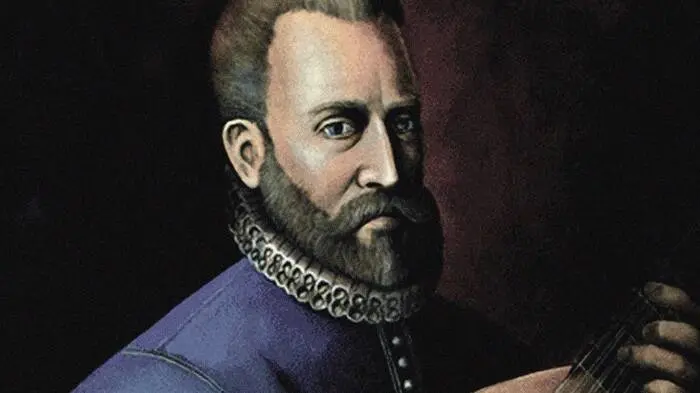
The Renaissance period was the true unveiling of classical music as it started to really take off. It was an era of revival -or even rebirth- for music as composers looked for inspiration beyond the church walls in art, science, and mythology.
This doesn’t mean that the church had lost influence, it simply wasn’t the only player in the game anymore. Choral music was the “top dog”, but stringed instruments such as the violin, cello, and lute were on the rise.
Organs and harpsichord were also gaining popularity, as well as notated music due to printing.
Famous composers of the period
- Josquin des Prez
- John Dowland
- Thomas Tallis, Gesualdo
- Monteverdi
- Byrd
- Gibbons
Baroque — 1600 to 1750
Classical music was unveiled and out in the open, so it was time to spice things up and redecorate. This took place during the Baroque period, which boils down to two words: excess and ornament.
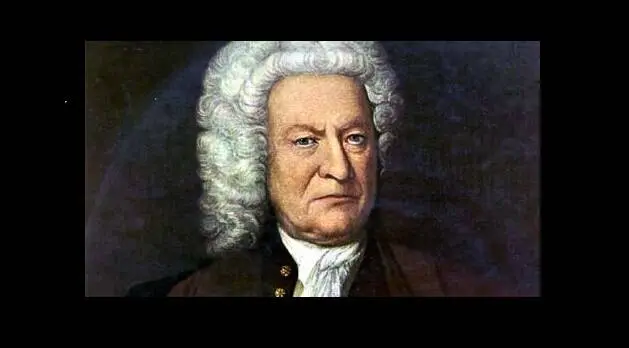
Music started to have a “dazzle” factor as musicians and composers began to show off. It’s in this era that classical music incorporated the structures, forms, and techniques we’re currently familiar with.
Other changes that occurred in the Baroque periods include:
- The use of major and minor keys, not ‘modes’.
- Updating notation systems
- Creating new forms such as the Fugue
- The birth of the orchestra, the opera, and initial hints of the symphony
For composers, concertos became a super popular format. As for instruments, strings, woodwind, trumpets, valveless horns, and the timpani shone brightly.
Famous composers of the period
- JS Bach
- Corelli
- Handel
- Monteverdi
- Vivaldi
- Couperin
- Scarlatti
- Telemann
Classical — 1750 to 1820
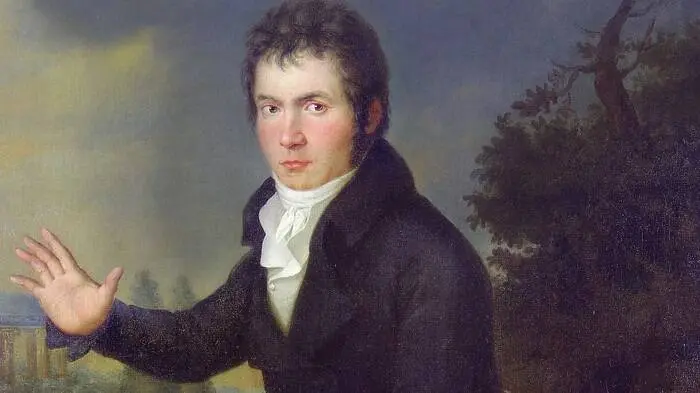
Yes, there’s a period in classical music called ‘Classical’ (as if things weren’t confusing enough, am I right?). However, it makes sense when you learn what took place in this period.
The Classical era was when people started being more interested in clean lines, structures, and forms. Classical music now incorporated clearer and lighter musical lines with the general motto being “Less is more”.
Instrumental music and piano sonatas were becoming more popular, along with the orchestra, the symphony, the opera, string quartet, and choral music.
Generally, instruments were taking the shape we nowadays know, with brass instruments featuring valves and the fortepiano starting to turn heads.
Famous composers of the period
- Beethoven
- Haydn
- Mozart
- Paganini
- Schubert
- Rossini
- CPE Bach
- Boccherini
Romantic — 1820 to 1910
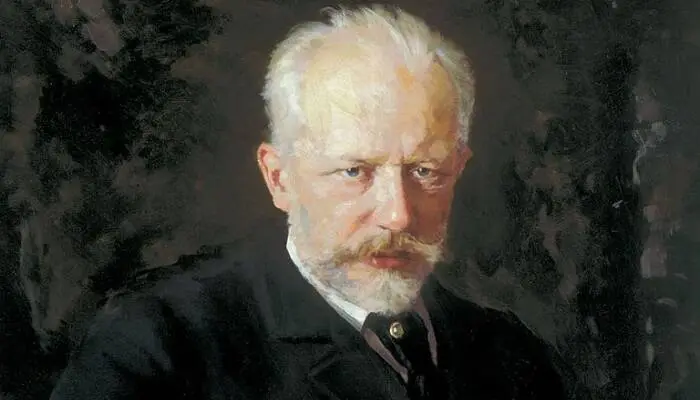
The Romantic period was an era of passion during which expression, poetry, drama, and tall tales were all the rave. All the “cleanliness” and sharpness of the previous had composers yearning to let loose and have their music actually “speak” of feelings and connect with the audience on an emotional level.
Art song, Lieder, and chamber music came into light, while the French salon music gained a wider fan base among the middle and upper-middle classes. Additionally, ballet and opera flourished.
In the mid 19th century, Steinway was established and the piano took the shape we know nowadays.
Famous composers of the period
- Tchaikovsky
- Wagner
- Mahler
- Verdi
- Brahms
- Robert Schumann
- Johann Strauss II
- Liszt
- Chopin
- Berlioz
- Puccini
- Felix Mendelssohn
- Dvořák
20th Century (Modernist) — 1900 to 2000
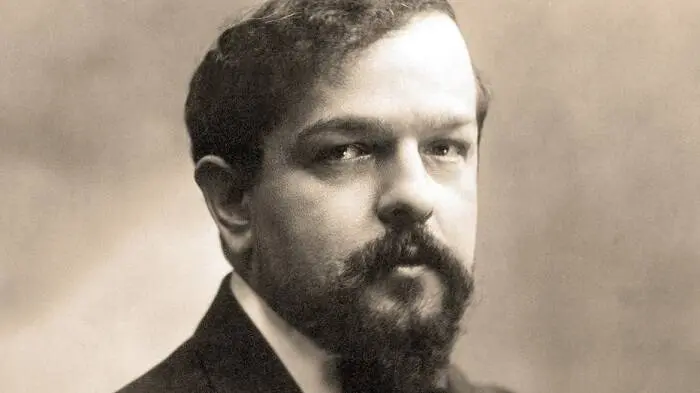
As the political scene grew more complicated, the first few decades of this period inspired many composers and musicians to produce works that responded to oppression, conflict, and the Atomic Age.
Basically, this was the period of “anything goes”, from abstract sounds and patterns to Impressionists and Minimalists. With technology advancing rapidly, new sounds were soon competing with the orchestra and even joining it.
Famous composers of the period
- Debussy
- Elgar
- Fauré
- Holst
- Stravinsky
- Britten
- Copland
- John Williams
- Shostakovich
- Bernstein
- Prokofiev
- Satie
- Philip Glass
- Vaughan Williams
- John Adams
Modern (Contemporary) — 2000 to present
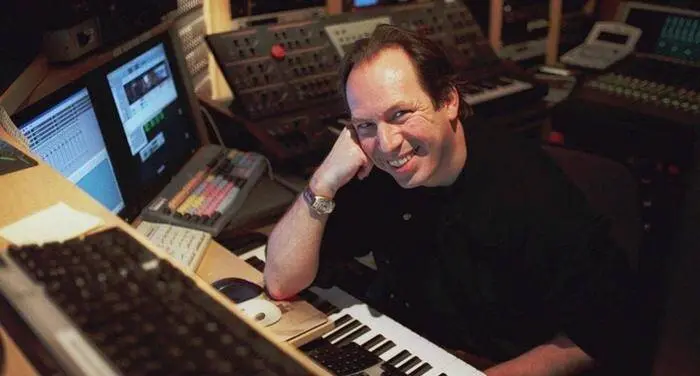
Modern classical music includes works of the last two decades or so, with new boundaries getting broken each passing decade thanks to technological advancements and stylistic shifts.
Composers nowadays are influenced by the past, inspired by the present, and playing for the future. There are still operas, concertos, and symphonies being written, but there are also game scores, film scores, and art installations’ music.
Famous composers of the period
- Hans Zimmer
- Ludovico Einaudi
- Philip Glass
- Jennifer Higdon
- Ólafur Arnalds
- Thomas Adès
- Max Richter
- John Williams
- Caroline Shaw
- Karl Jenkins
